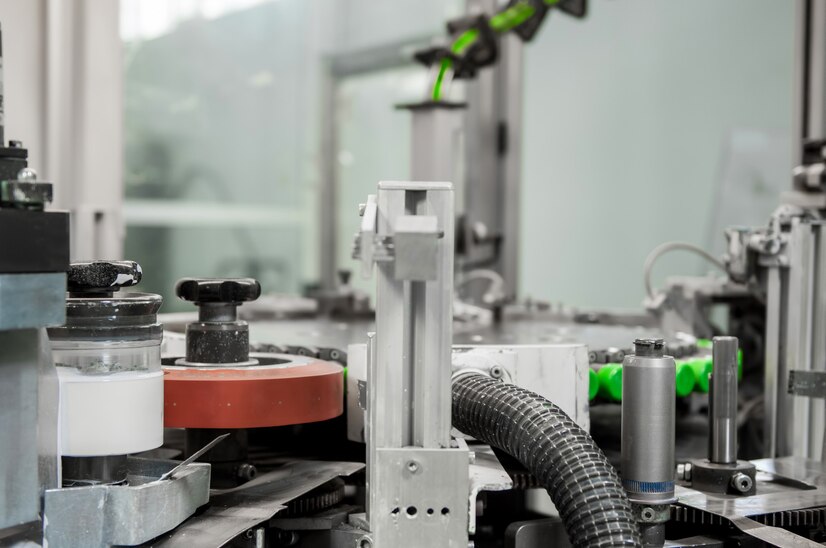Anchor text: mold manufacturer China, Die casting China
Meta Description: Not all pressure is created equal! Delve into the contrasting worlds of low-pressure and high-pressure die casting to understand which method best suits your needs.
Die casting, a cornerstone of metalworking offers a powerful and versatile approach to manufacturing intricate metal parts. But within this realm, two distinct approaches reign supreme: low-pressure die casting (LPDC) and high-pressure die casting (HPDC). While both utilize permanent molds, the way they force molten metal into the cavity sets them worlds apart. Understanding these differences is crucial for selecting the optimal process for your project.
High-Pressure Die Casting: Power and Precision
High-pressure die casting, often simply referred to as die casting, is the dominant force in the industry. Here’s a breakdown of its core principles:
Mold Preparation: A robust steel mold, typically consisting of two halves, is meticulously crafted to define the final shape of the cast part. The mold cavity is precisely machined, and the surfaces are often polished and treated with special coatings to ensure smooth part ejection and a high-quality surface finish.
Molten Metal Preparation: The chosen metal alloy, often aluminum, magnesium, zinc, or copper alloys, is melted in a furnace at a precisely controlled temperature by mold manufacturer China.
High-Pressure Injection: The molten metal is injected into the mold cavity at extremely high pressure (often exceeding 100 MPa or 14,500 psi). This high pressure ensures complete filling of the cavity, minimizing air pockets (porosity) within the cast part and achieving sharp details. Imagine a powerful syringe injecting the molten metal into the intricate mold cavity with immense force.
Solidification: Once the cavity is filled, the metal rapidly cools and solidifies within the mold. Due to the high thermal conductivity of metals, solidification in HPDC is much faster compared to plastic injection molding.
Mold Opening and Ejection: After sufficient solidification, the mold opens, and ejector pins strategically placed within the Die casting China push the cast part out.
Trimming and Finishing: The ejected part might still have a thin remnant of metal attached, stemming from the sprue and runner system that delivered the molten metal. This excess material is typically trimmed off using secondary processes. Depending on application, the part might undergo additional finishing steps like deburring (removing sharp edges), machining for tighter tolerances, or surface treatments (painting, plating).
Repetition: The beauty of HPDC lies in its cyclical nature. Once the part is ejected and any finishing touches are completed, the mold closes again, and molten metal is injected for the next casting cycle. This rapid and automated process allows for high-volume production of identical parts.
Advantages of High-Pressure Die Casting:
High Production Rates: HPDC excels at producing large quantities of identical parts quickly and efficiently. The automation of the process, coupled with relatively short cycle times, makes it ideal for mass production.
Near-Net-Shape Parts: HPDC delivers parts with a high degree of dimensional accuracy and intricate details. This minimizes the need for extensive post-processing compared to subtractive manufacturing techniques like machining.
Material Versatility: A wide range of metal alloys can be used in HPDC, each offering unique properties like strength, weight, weight savings, corrosion resistance, or electrical conductivity. This allows for tailoring the parts to meet the specific needs of the application.
Good Surface Finish: HPDC can achieve good surface finishes, which can be further enhanced by polishing or plating processes.
Strength and Durability: Many die-cast alloys offer excellent strength and durability, making them suitable for demanding applications.
The Gentle Touch of Low-Pressure Die Casting
Low-pressure die casting (LPDC) offers a distinct approach, utilizing a gentler force to fill the mold cavity. Here’s a closer look:
Mold Preparation: Similar to HPDC, a permanent metallic mold is prepared with cleaning and lubrication.
Molten Metal Preparation: The chosen metal alloy, often aluminum or alloys with lower melting points, is melted in a furnace.
Low-Pressure Injection: Molten metal is transferred from the furnace to a holding crucible. Inert gas pressurizes the crucible, forcing the metal into the mold cavity through a narrow opening at a relatively low pressure (typically ranging from 2 to 15 psi). Imagine a gentle push compared to the forceful injection of HPDC.
Solidification and Cooling: The mold remains closed for a controlled period, allowing the metal to solidify completely under low pressure.
Mold Opening and Ejection: Once solidified, the mold opens, and ejector pins push the cast part out.
In Conclusion:
By understanding these distinctions, you can make an informed decision about the most suitable die-casting method for your specific project requirements. Both LPDC and HPDC remain powerful tools in the metalworking arsenal, pushing the boundaries of what’s possible in shaping intricate and functional metal parts.
Must Read :
- 5 Yoga For Back Pain
- 4 Types Of Physical Activity. You Should Know
- How To Use Hip Abductor Machine? A Comprehensive Guide

